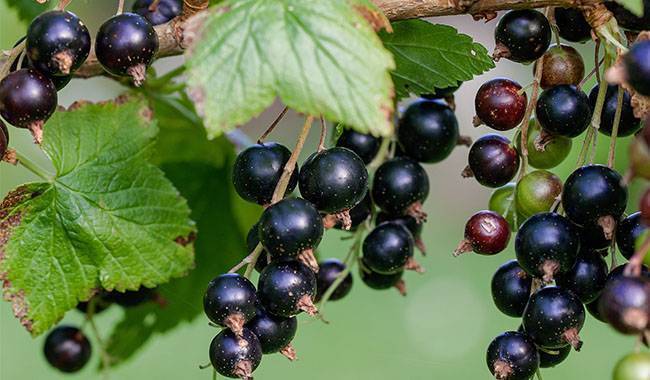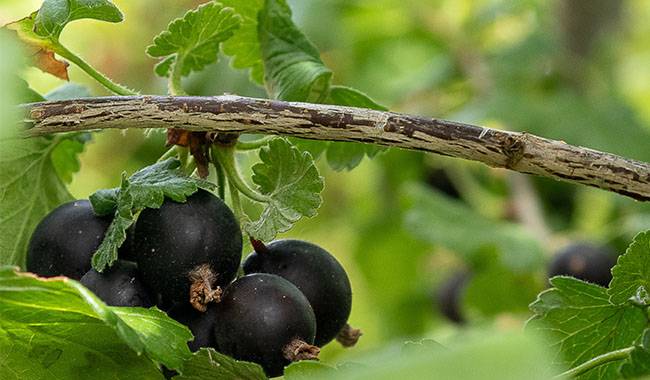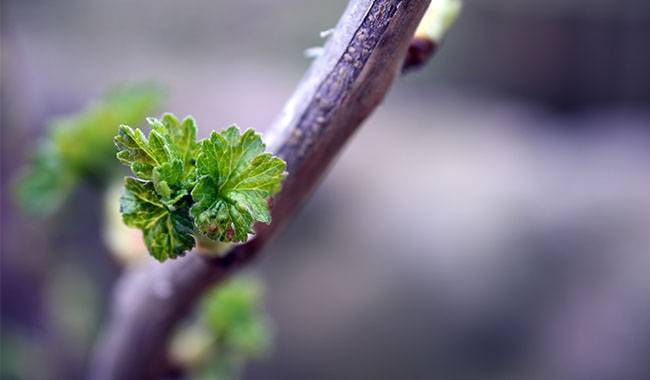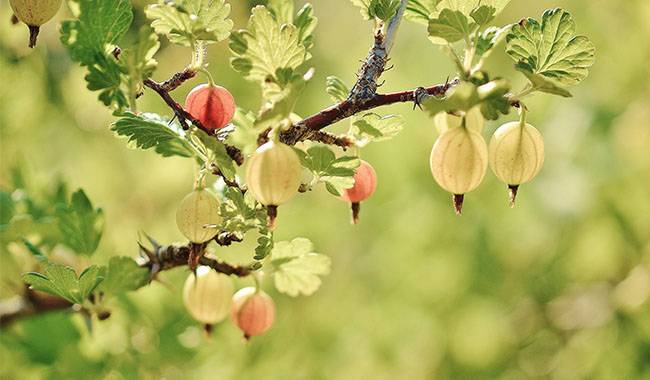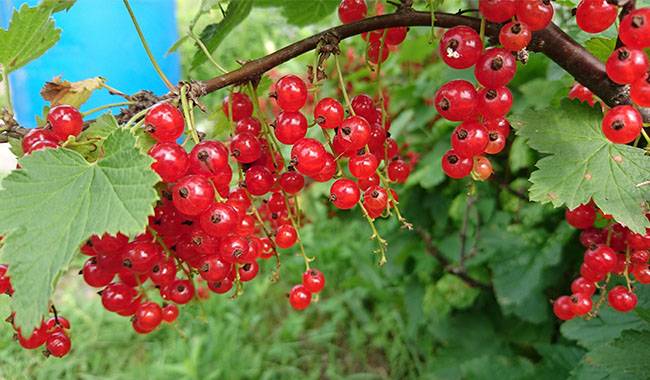
Even modern varieties of Currants acquired in the 21st century, listed in the National Register and zoned in a particular area, are often sick or affected by various pests.
Fortunately, there is a plethora of means available to combat the enemies of the harvest, both chemical and folk (not badly, by the way).
Today we will talk about the most dangerous and frequently occurring Currants pests and diseases and control measures.
CURRANTS POWDERY MILDEW
Let’s start with Currants disease. The most widespread disease is powdery mildew, and still, it is still impossible to beat it. This disease affects all parts of Currants from time to time, including the berries, and even appears on resistant varieties of Currants.
Powdery mildew of Currants is a fungal disease that develops most active during warm and humid times. To protect your garden from this disease, you should not overgrow plants; you need to prune sanitarily, cut back shoots that thicken the canopy, water plants moderately, and remove fruit and other plant debris from biting areas.
However, sometimes even all these defenses do not help, and powdery mildew can appear on the fruit and leaves of Currants. If the number of affected fruits and leaves is not large, you can simply cut them off and burn them. If most of the small leaves are infested, fungicidal treatment should be started immediately.
When treating Currants, be sure to follow the instructions on the package that specifies when a particular fungicide can be used. As a general rule, all chemical treatments should be completed at least a few weeks before harvest. Be sure to find out the hazard level of the fungicide and whether it is not dangerous to bees. If there is an apiary nearby, you should treat with those fungicides that do not have a hazard level higher than 3.
What happens if you don’t control powdery mildew? Then the powdery mildew spots on the leaves of Currants will start to proliferate and the size of the fruit may not change, but the fruit will start to rot. Later the spores will mature, the patches will turn white and the first gust of wind will spread the spores far away and infect nearby plants and even other crops such as Currants.
Incidentally, even when untreated plants drop their leaves in the fall, powdery mildew does not escape from the area; it penetrates the soil, lingers in the bark and fallen leaves, and attacks the plants again in the spring, eventually killing them.
What should I do if Currants powdery mildew is found only a few days before harvest and I cannot apply a fungicide? In this case, folk remedies can be helpful.
Good feedback comes from gardeners who fight powdery mildew with the help of a mixture of soda and soap.
To obtain this solution in a bucket of water, you need to dissolve 6-7 grams of baking soda and 50-60 grams of finely grated antibacterial soap. All affected plants should be treated with this solution as thoroughly as possible.
After harvest, be sure to treat all plants with a fungicide, and in the fall, loosen the soil in the biting area and treat the plants with the fungicide again.
CURRANTS RUST DISEASE
This disease is frequently seen on Currants. It usually appears on the leaf layer, but also on flowers and ovaries. Initially, it is either a small orange spot called goosefoot rust or a small yellow spot that occurs only on the upper part of the leaf called columnar rust.
Rust can also be fought by a fungicide (which is a fungal disease) or by treating with 1% Bordeaux mixture, if there is not much time left before harvest.
The following year, after the appearance of rust in Currants, it is necessary to treat the plants again. The first treatment must be applied when the leaves are in bloom, the second when the buds are forming and the third after flowering. A fourth treatment can also be applied if the plant is severely attacked by rust.
CURRANTS ANTHRACNOSE
This is another fungal disease that usually affects the leaf layer of Currants particularly severely. Initially, small, slightly faint, dark brown spots can be found on them. Over time and as the disease progresses, these spots begin to merge, causing the leaflets to dry out and fall off prematurely. The leaflets at the tips of shoots are usually unaffected by anthracnose and remain intact.
Currants bushes infected with anthracnose stop developing, stop shoot growth, significantly worsen the taste of the berries, and have very few berries.
How to control Currants anthracnose? First of all, you need to collect and destroy fallen leaves every year, loosen the soil in the biting area, check the leaves frequently for infection, and if you see a single leaflet with a diseased spot, tear it off and burn it immediately. If the spots are found on a large number of small leaves, it is necessary to treat the plants with copper sulfate, dissolving 45-50 grams of this substance in a bucket of water.
If the disease attacks your plants year after year, you should not wait for its appearance and should treat the plants with 1% Bordeaux mixture, and not once, but four or even five times, starting from early spring. It is obligatory to treat immediately after leaf opening, before flowering, at the end of flowering, within a few weeks after flowering, and throughout the harvest.
CATERPILLARS ON CURRANTS
Many pest caterpillars can be found on Currants. For example, in early spring, Currants caterpillars attack when the leaves begin to bloom. They are green to blue-green caterpillars with black spots on their bodies and ten pairs of legs.
Larger numbers of caterpillars can consume an entire leaf installation of a bush in 7-8 days, so they must be treated immediately. If you have one or two Currants bushes you can collect the caterpillars by hand, if you have many bushes and caterpillars you can destroy them with insecticides. From folk means of control, you can apply an infusion of tobacco, mustard, or other crops, and soap must be added to the composition.
Another caterpillar of the Currants moth is also quite voracious and willing to destroy the foliage installations of Currants as well. The caterpillar reaches a length of 1-1.5inch (3-4 cm) and has a rather distinctive bright yellow color with black streaks and spots.
To eliminate the pests, in addition to using insecticides, you can place sticky pheromone traps on the plots to hunt butterflies and try to eliminate caterpillars by folk means: treat the plants with wood ash or soot soaks. To do this, you can take three pounds of sifted and groundwood ash or soot, put it in a bucket, and pour water over it. Let it soak for two days, then strain it, add 45-50 grams of soap and treat the plants.
Another harmful caterpillar is the larvae of Currants thistle. Individuals reach 0.6inch (1.5cm) in length and have a gray-green coloration with a black head and round black spots on the barrel that are shiny.
The caterpillars do not harm the leaf lamellae but eat up the ovaries. In fact, a single caterpillar can destroy up to six future berries. Caterpillars can be collected by hand, and if there are many, they can be exterminated with insecticides. Mint grown near Currants is said to scare off firebugs – it’s worth a try.
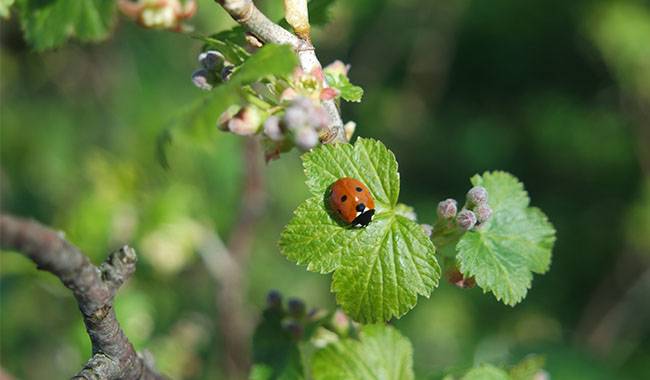
SESIIDAE ON CURRANTS
It has been found that Sesiidae can affect not only Currants but also Currants. usually, notice the results of Sesiidae activity on dead shoots, if you cut them down you can see a black spot in the center, this is the residual route of the caterpillar, it moves in the center of the shoot and eats its contents – its core. Usually, the caterpillar moves along the shoot from top to bottom and penetrates through the gaps where the moth lays its eggs.
Currants should be treated specifically for this insect, which is strikingly similar to a wasp and replicates its habits very precisely. From May until the beginning of June, you must treat with the biological preparations Lepidocide (30 g per 10 liters of water) and Bitoxybacillin (100 g per 10 liters of water), and also with the “biological preparation for plant pests” (2 ml per 10 liters of water). In addition, it is necessary to always isolate the incision with garden varnish after pruning.
CURRANTS CECIDOMYIIDAE
Cecidomyiidae of Currants harms, at the same time, three species: shoots, flowers, and leaves, affecting the associated plant organs. The callus is particularly active in thickened Currants plantations.
You may notice them only when the larvae start destroying the plant organs where Currants lay their eggs. Control larvae with insecticides and also catch wireworms with Pheromone traps placed around them.
As a preventive measure, the soil and plants can be treated with insecticide again the following spring.
Among the natural measures to combat the larvae of Cecidomyiidae can be called the treatment with an infusion of tomato juice. To prepare, five kilograms of fresh tomato plant tracts are placed in a container, poured into a bucket of water at room temperature, and left for about a day. Then strain the solution, add half a bar of laundry soap, dissolve it fully in this composition, and you can start the treatment, keeping it 2-3 times, alternating days.
It has also been noted that the aroma of mint suppresses the Cecidomyiidae of Currants, so the Currants area can be changed with the mint plant.
CURRANTS SEPTICEMIA
In general, Currants with septicemia are also the most susceptible to leaf damage. Initially, a pair or several spots may appear on them, having a rounded shape and a grayish color with a distinct black edge.
In addition, black spots form on the surface of the spots, these are foci of mature spores and the infection is ready to spread over great distances. After the appearance of mature spores, leaves usually begin to wilt, curl, shred or fall off. Plants usually lose up to 95% of their leaf mass much sooner than they should.
How do I against it? Always collect all fallen leaves and other plant debris and burn them. Loosen the soil in the bushes both in the fall and in the spring. Apply fungicide, Bordeaux mixture, and copper sulfate treatments, as well as control anthracnose.
In addition, septoria is particularly active in attacking plants that are deficient in manganese, copper, zinc, and boron in the soil, so it is necessary to take care that these trace elements are in normal condition in the soil.
CURRANTS MOSAIC
Mosaic is a viral infection from which there is no escape. Plants infected with mosaics should be uprooted and burned as soon as possible. How can you tell if it is Mosaic?
You will usually notice a prominent bright yellow “pattern” on the leaves of diseased plants, usually along the main veins, at the peak of the season. After it appears, the plant seems to stop growing and developing, the fruit barely forms, and the leaves become very small and wrinkled.
CURRANTS APHIDS
Aphids are small sucking insects that usually live in colonies – either large or small, often carried by ants – and feed on their sweet secretions, sucking sap from young shoots and leaf layers, causing them to become severely deformed, distorted, and stop growing. In addition, aphids can be carriers of diseases, such as Mosaic disease.
Aphids themselves may be difficult to spot, but it is easy to spot twisted leaves and deformed shoots. If you turn the leaves of Currants upside down or examine the shoots, you will see colonies of aphids.
As we have already mentioned, ants are often the culprit, so if you have an ant nest, then you must first remove it from the area before you can tackle the aphid problem. If the aphid population is small, you can cut it off and destroy it; if it is large, you must use insecticides.
In addition to chemical methods, aphids on Currants can be treated by folk means. Treating the plants with a soap solution (250 grams of antibacterial soap diluted in a bucket of water).
PREVENTIVE TREATMENT FOR CURRANTS
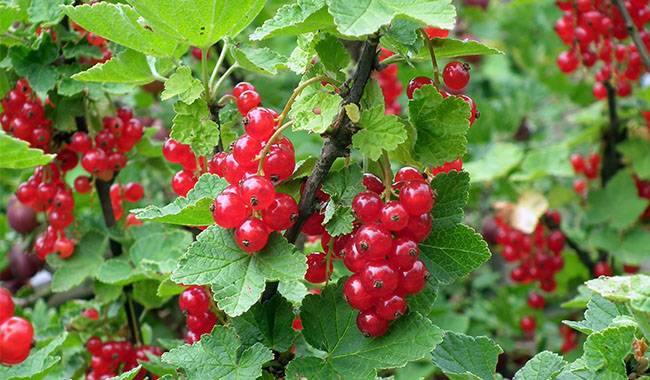
It is known that diseases and pests are easier to prevent than to treat, so you must not forget about prevention. Of course, it is necessary to start taking protective measures before planting Currants on the plot, and for this purpose, it is better to choose a place with clean soil, where Currants have not been planted before.
The area under Currants should be open and flat, without depressions, and the bushes should be placed so that they do not interfere with each other and are not shaded. It is also necessary to prune and thin the canopy more often and not let it thicken.
Protect the plants in early spring by heating them with hot water to 158-167°F (70-75°C). Water this with a watering can in late March or early April. You can usually water 3 to 4 shrubs with one bucket of water, depending on their age.
Don’t forget to collect and destroy plant residues – branches, leaves, fruits.
Always mulch the soil around Currants’ trees and change the mulch once a month so that even if moths lay eggs there, they will be eliminated when the new layer of mulch is replaced.
When cutting, be sure to seal the edges of the cut with garden varnish to prevent Sesiidae from entering the shoots.
Don’t forget preventive treatments. So, as early as spring, you can treat Currants with 3% Bordeaux mixture and after flowering – with 1% Bordeaux mixture, which is a good way to prevent fungal diseases.
To protect plants from powdery mildew in summer, you can treat them with a solution of soda and soap (50 g of soda and 50 g of soap per bucket of water). You can do 2-3 treatments in summer with an interval of 10-15 days.
After harvest, you can treat the plants with a 1% Bordeaux mixture to prevent anthracnose.
In autumn, be sure to loosen the soil in the shrub area, water the shrubs, and cover the surface with peat or humus.




